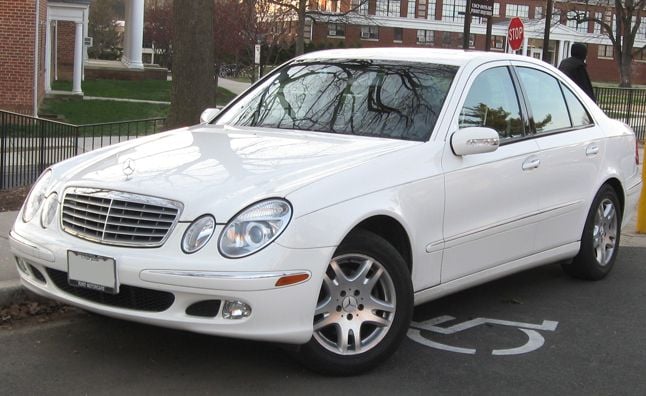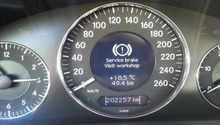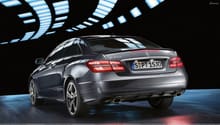Mercedes-Benz E-Class and E-Class AMG: General Information and Maintenance Schedule
The Mercedes-Benz E-Class models come loaded with some of the best features on the automotive market. Learn how to maintain them.
This article applies to the Mercedes-Benz E-Class and E-Class AMG (2002-2009).
When a Mercedes-Benz E-Class or Mercedes-Benz E-Class AMG rolls onto a street or approaches a red traffic signal, other drivers on the road, as well as curious pedestrians in the crosswalk, immediately turn and take notice. Popular in the midsize luxury car class with car buyers, the Mercedes-Benz E-Class offers as much comfort in the cabin as it does performance and safety on the road. The Mercedes-Benz E-Class AMG delivers a potent engine lineup while ensuring a superb ride.
Component Breakdown
Miles Per Gallon (MPG)
Generally, the Mercedes-Benz E-Class reaches up to 3 to 5 more miles of travel in the city and up to 5 to 10 miles of travel on the highway than the Mercedes-Benz E-Class AMG.

Variety of Body Styles
The Mercedes E-Class is available in multiple body styles, including the sedan, coupe, convertible, and wagon. High-performance AMG vehicles offer subtle body enhancements and an attractive interior. Engineered for excellence, the E-Class is a dependable vehicle that is best suited to drivers looking to achieve performance, speed, and power on the road.

Figure 2. 2009 Mercedes-Benz E-Class sedan. 
Figure 3. 2007-2009 Mercedes-Benz E-Class Wagon.
6.2 L 507 HP V8 Engine
The Mercedes-Benz V8 engine delivers on horsepower, while providing a dynamic driving experience on both sides of the cabin. While providing great value for the money, the E-Class reaches top speeds and performs well in all seasons.

Scheduled Maintenance
Service vehicle at 2,000 miles and rotate tires at 5,000 miles. From then on, service your vehicle annually or every 10,000 miles. Regular checks include:
- Engine oil
- Coolant
- Brake fluid
- Windshield washer fluid
- Lights
Common Questions
How do maintenance costs for the E-Class compare to other vehicles?
Look on any forum and you'll see most Mercedes-Benz owners rate maintenance costs favorably, citing most expenses as "not bad" or "not too high." As is common for most luxury vehicles, however, repair and replacement part costs can be costly, depending the repair.
How do repair frequencies for the E-Class compare across model years?
Based on owner experience through the year Dec. 31, 2012, repair frequencies for the E-Class varied from low (2005 model) to moderate (2006 to 2010 models), with a large spike in repairs for the 2000 model.
- 20 to 40 repairs is generally considered "low."
- 45 to 65 repairs is generally considered "moderate."
- Anything above 100 is generally considered "very high."
Ratings are based on repair trips per 100 cars per year.
The above-mentioned stats largely mirror owner experiences through March 31, 2013, which only say one model year (2000) receive a "high" rating due to 86 repairs among those sampled. However, by the end of 2014, owners reported the most repair work was needed for the 2003 model. Other models that required greater attention for owners sampled at the end of 2014 included the 2005, 2006, and 2009 model years.
Common Issues
AIRMATIC "Visit Workshop" Light Comes On
The issue could be a faulty relay or an intermittent compressor. Have the issue diagnosed at your dealer, where a qualified professional can read the codes in the AIRMATIC system and carry out the needed repair.
Check Engine Light Comes On
If your engine oil has been topped off and the air and cabin filters, respectively, have both been replaced (and there are no other immediate signs of trouble), the most likely culprit is a faulty Mass Air Flow (MAF) system, which might need to be cleaned or replaced.
Broken Vacuum Hose in the Intake Manifold
One likely tell-tale sign of a broken vacuum hose in the intake manifold is a sudden loss in gasoline mileage. If you are unskilled in completing this repair on your own, visit a local dealer or garage.
Related Discussions
- General Info - MBWorld.com
- AMG General Info - MBWorld.com
- Maintenance Schedule - MBWorld.com






